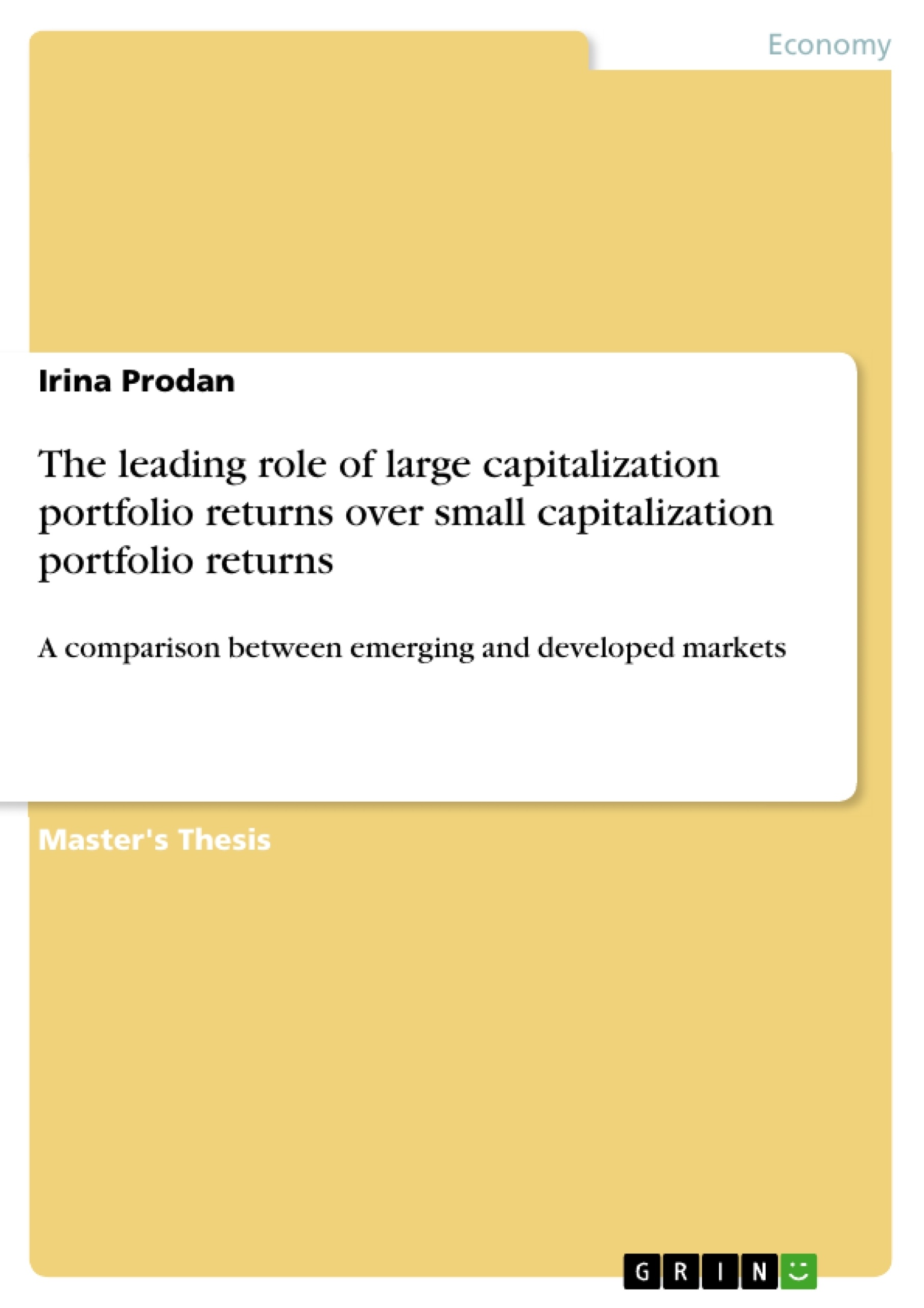This study examines the lead-lag patterns on the European markets between returns on portfolios sorted by size. Additionally, we test for two novel factors to explain lead-lag effects – size distribution and market efficiency. A chief separation between countries is established based on stock market development, and lead-lag structures are analyzed in the context of this partition. Country-by-country regressions are employed to prove the leading role of large company returns over small company returns. A measure of the lead-lag effect is developed in the form of the speed of adjustment of small firm returns to large firm returns. A pooled regression is performed in order to shed light over additional determinant factors of lead-lag patterns and a distinct size of lead-lag effects in emerging and advanced economies. Our results show that size is the underlying determinant of large portfolios leading small ones, while there is only partial support to validate that market inefficiencies can cause lead-lag effects. Also, we find that size heterogeneity widens lead-lag effects in developed markets.
Inhaltsverzeichnis (Table of Contents)
- Introduction
- Literature review
- Developed countries
- Emerging countries
- Assumptions
- Methodology
- Country-by-country regressions
- Speed of adjustment measurement
- Market efficiency measurement
- Size distribution measurement
- Pooled regression
- Data
- Results
- Country-by-country regressions
- Pooled regression
- Conclusions
Zielsetzung und Themenschwerpunkte (Objectives and Key Themes)
This study examines the relationship between returns on portfolios sorted by size, specifically focusing on the lead-lag patterns observed in European markets. The research investigates two novel factors that could explain these lead-lag effects: size distribution and market efficiency. The study aims to analyze the lead-lag structures within a framework that distinguishes between countries based on their stock market development.- Lead-lag patterns between large and small capitalization portfolios in European markets
- The influence of size distribution and market efficiency on lead-lag effects
- Comparison of lead-lag structures in emerging and developed economies
- Identifying the underlying determinants of lead-lag patterns
- Assessing the impact of market inefficiencies on lead-lag effects
Zusammenfassung der Kapitel (Chapter Summaries)
- Introduction: This chapter sets the stage by discussing the predictability of short-term stock returns, highlighting the concept of lead-lag effects, particularly those driven by size differences. It outlines the study's focus on size-driven lead-lag patterns in both emerging and developed European markets, along with the exploration of new causal factors, size dispersion, and market efficiency.
- Literature Review: This chapter provides a detailed overview of existing research on lead-lag effects in developed countries, highlighting the consistent finding that large capitalization stocks lead the returns of small capitalization stocks. It explores various rationales for these size-based lead-lag effects, including information adjustment speed, financial transparency, market imperfections, and other explanations.
- Methodology: This chapter outlines the methodology employed in the study, including country-by-country regressions, the measurement of speed of adjustment, market efficiency, and size distribution. It explains the use of pooled regression to analyze the determinants of lead-lag patterns.
- Data: This chapter presents the data used in the study, providing details about its sources and characteristics.
- Results: This chapter presents the findings of the study, including the results of country-by-country regressions and the pooled regression. The analysis focuses on identifying the underlying determinants of lead-lag patterns and exploring the impact of size distribution and market efficiency.
Schlüsselwörter (Keywords)
The study focuses on lead-lag effects, stock return predictability, the determinants of lead-lag patterns, and the differences between emerging and developed markets. Other key concepts include size distribution, market efficiency, and the speed of adjustment of small firm returns to large firm returns.- Quote paper
- Irina Prodan (Author), 2012, The leading role of large capitalization portfolio returns over small capitalization portfolio returns, Munich, GRIN Verlag, https://www.grin.com/document/200410



